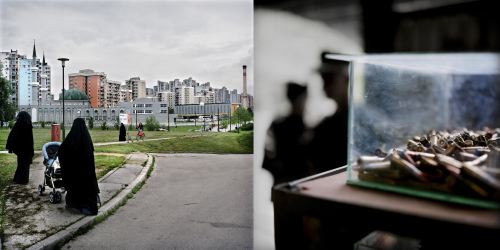Steeve IUNCKER
This post is also available in:
 French
French
Today, Sarajevo, in the heart of Europe, remains a veritable arms magazine. With more than 67 000 metric tons of weaponry to demilitarize, the Capital of Bosnia and Herzegovina is a considerable geopolitical liability for its neighboring countries. The siege of Sarajevo remains the longest in the history of modern warfare. From April 5th 1992 to February 29th 1996, Serbian paramilitary troops besieged the capital of this self-proclaimed Republic. The costs in both lives and material were substantial: 11 000 dead, 50 000 injured and 329 shell impacts a day. Following the Cold War, through the significant and methodical use of explosive ordnance and other conventional weapons, there still remain traces of war passed. More noticeable than the pock-holes of sniper bullets against building walls, the seemingly unending stock of explosives has to be demilitarized, dismantled, and recycled. Presented in a diptych format, he proposes his interpretation of the link between Daily life in Sarajevo, and its unexploded ordnance.



